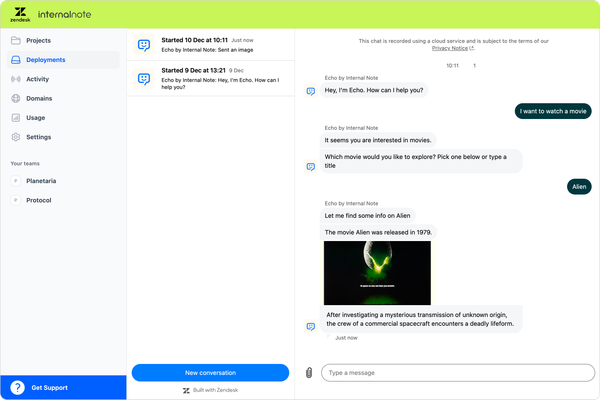
The Evolution of Ticket Access Control in Zendesk: From Brands to Department Spaces
Zendesk introduces Department Spaces, shifting ticket access from groups to brands. This simplifies multi-brand and internal service setups, improves privacy, and streamlines routing with queues—strengthening Zendesk as a platform for both customer and employee support.
Most companies use Zendesk to support their products or services. They combine Help Center articles, email, and social channels into a unified inbox that creates tickets across all touch points—making omnichannel support easy to manage.
This article explores how Department Spaces simplify access control and modernize Zendesk environments for multi-brand and internal support teams.
A quick way to gauge Zendesk proficiency is by looking at email and domain setup. Basic setups stick with company.zendesk.com URLs and default email addresses like [email protected], but most teams upgrade quickly.
A mature setup uses a custom domain—like support.company.com—and a branded email address. This hides Zendesk in the background and builds trust. Customers see familiar domains, get emails from known senders, and your team benefits from verified communication via SSL, DKIM, and DMARC.
Beyond security, custom domains help your Zendesk reflect your brand. Add a branded Help Center theme, a web widget in your company colors, a custom email template, and an AI Agent with a friendly avatar—and your support setup starts to feel truly yours.
Some companies support multiple brands within one Zendesk instance. Coca-Cola, for example, might offer support for Coke, Fanta, Sprite, and other products from the same environment. Or a business may split support between B2B and B2C teams to serve different audiences.
Not only do these brands require different colors and logos, their Help Center content and support flows might also differ widely across brands. To handle this use case Zendesk supports the concept of multiple brands, or multi-brand in short, in a single instance.
All tickets still land in one Zendesk environment, enabling shared reporting and cross-brand workflows for agents. Escalations to finance, logistics, or IT stay unified behind the scenes—while customers see only their brand’s Help Center, AI Agent, and support email.
As Zendesk evolved to support internal service teams—like HR, IT, and Facilities—brands shifted from being customer-facing labels to representing internal departments.
Many companies already use brands to separate internal teams. One “brand” handles customer support, another covers employee services like HR or IT. While this approach works, it often feels like a workaround—more a creative repurposing than an intended design.
Zendesk recognized these emerging use cases—and is now repositioning brands as department spaces to better support them.
What Brands were originally for
Originally, brands in Zendesk were used to segment customer experiences—by product, region, or business line.
Each brand could have its own Help Center, support address, and contact forms, along with tailored SLAs, automations, and business rules.
But while brands defined the customer-facing experience, ticket access remained group-based. Even in a multi-brand setup, permissions were still tied to groups—not brands.
Groups vs Departments: The old model
Even in a two-brand setup, tickets were still routed to groups and agents who had no brand awareness. That’s the limitation: access was controlled at the group level—not the brand.
Using groups for routing and access control worked—up to a point. In multi-brand environments, it often led to duplication: separate groups for each brand (e.g. IT-US, IT-EU), along with twice the triggers, queues, and reports.
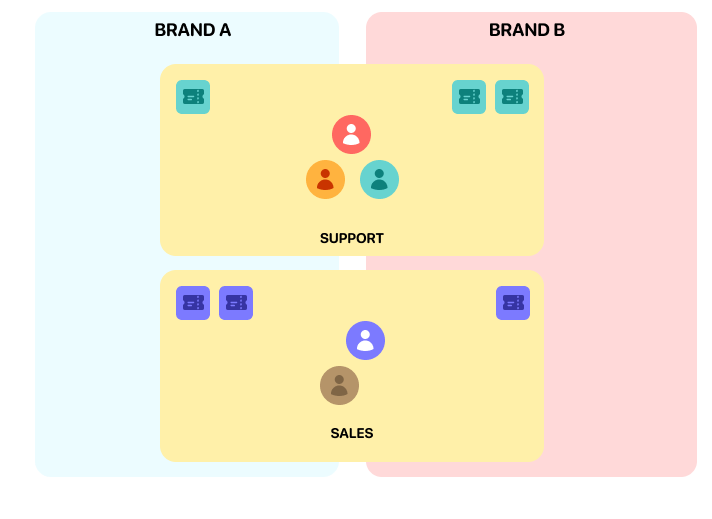

Two approaches to groups.
The diagrams above show two typical approaches to groups and brands. In the first, tickets are routed to Sales or Support groups based on intent. Agents in these groups can access tickets across both brands.
This model works well for smaller teams. But once you factor in GDPR, outsourcing, SLAs, and skill-based routing, most companies shift to the second setup.
Each brand gets its own Sales and Support groups. Agents who only work on Brand A or B are added to those respective groups. Agents who span both brands need to be added to all four groups.
This setup looks simple—but behind the scenes, it doubles your workload. Twice the triggers. Twice the queues. Duplicated reports. Want to stop Support A from seeing Support B’s tickets? You’ll need to block access to entire groups—sometimes at the expense of escalation visibility.
That also means a Support agent in Brand A may lose sight of Sales tickets from the same brand—hurting collaboration and context sharing.
Department Spaces and brand-based access
To simplify this, Zendesk is introducing one of its biggest platform changes in years: Department Spaces.
With Department Spaces, ticket access is now controlled by brand membership.
Access control now moves up a level—from groups to brands.
Previously, agents could see tickets if they belonged to the right group. Now, they can only access tickets for the brands they’re assigned to. Groups still apply, but only to narrow access within a brand.
And as Zendesk is making this access-control-model change, they also used the opportunity to reposition “brand” as the structural equivalent of a department.
What changes?
Previously, group membership granted ticket access—regardless of brand. Your role determined whether you could see all groups, or just your own. Want to limit an agent to one brand? You had to route all that brand’s tickets into a dedicated group—and restrict them from every other one.
Now, the brand is the gatekeeper. If you’re not assigned to a brand, you can’t see its tickets—even if they land in your group.
That’s the key shift: visibility starts at the brand level.
Now, the brand is the gatekeeper.
What's possible now
Consider a scenario with two brands: A and B.
Tickets for each brand are routed to either Support or Sales based on intent.
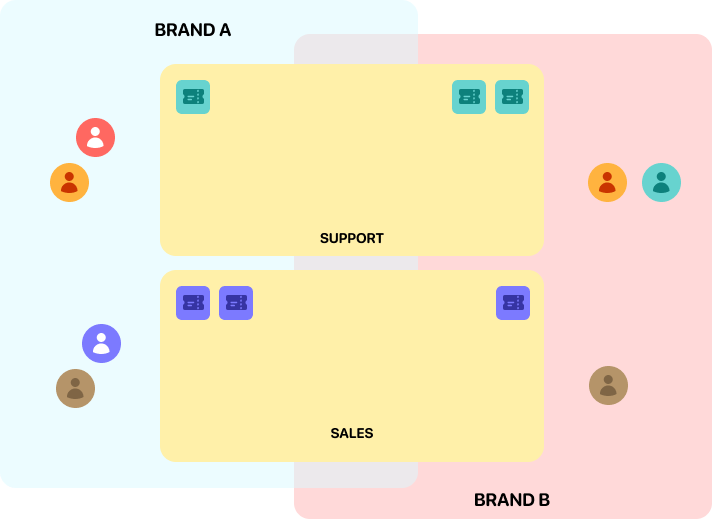
Brand A has four agents—two in Support, two in Sales.
Brand B has three: two in Support and one in Sales.
The Support group receives three tickets—two from Brand A, one from Brand B.
But agents can only see tickets from the brands they’re assigned to. Only the orange agent, who belongs to both brands, can view all three.

To make this clearer, let’s reshuffle the agents:
- Orange agent: sees all three tickets across both brands
- Red agent: sees only Brand A’s support ticket
- Green agent: sees only Brand B’s support tickets
The same logic applies to Sales:
- Brown agent: sees all sales tickets
- Purple agent: sees only Brand A’s sales tickets
Even if agents have access to all groups, brand membership still limits visibility. The red agent sees only Brand A’s tickets. Orange and brown agents—assigned to both brands—can see all six.
Employee Service - From External Brands to Internal Departments
Replace Brand A and B with IT and HR, and the benefits become clear. An HR agent assigned to the HR brand can’t see IT tickets.
Legal or Marketing agents who support both teams can safely stay within their group—able to handle tickets across departments, without seeing others they shouldn’t.
Internal HR, IT, and Facilities teams can now share one Zendesk instance—while keeping data safely siloed. Fewer triggers, fewer groups, and far less risk of access errors due to misconfigured routing.
Benefits of Department Spaces:
- Data privacy by default: access is brand-based from the moment a ticket is created
- Fewer misrouted tickets
- Simpler permissions: group agents by department or brand
- Clearer routing logic, especially when paired with queues
Setting up Brand membership and access
You can manage Department Spaces in Admin Center under People | Team members.
Once the feature goes live, select one or more users and click Manage brand membership.
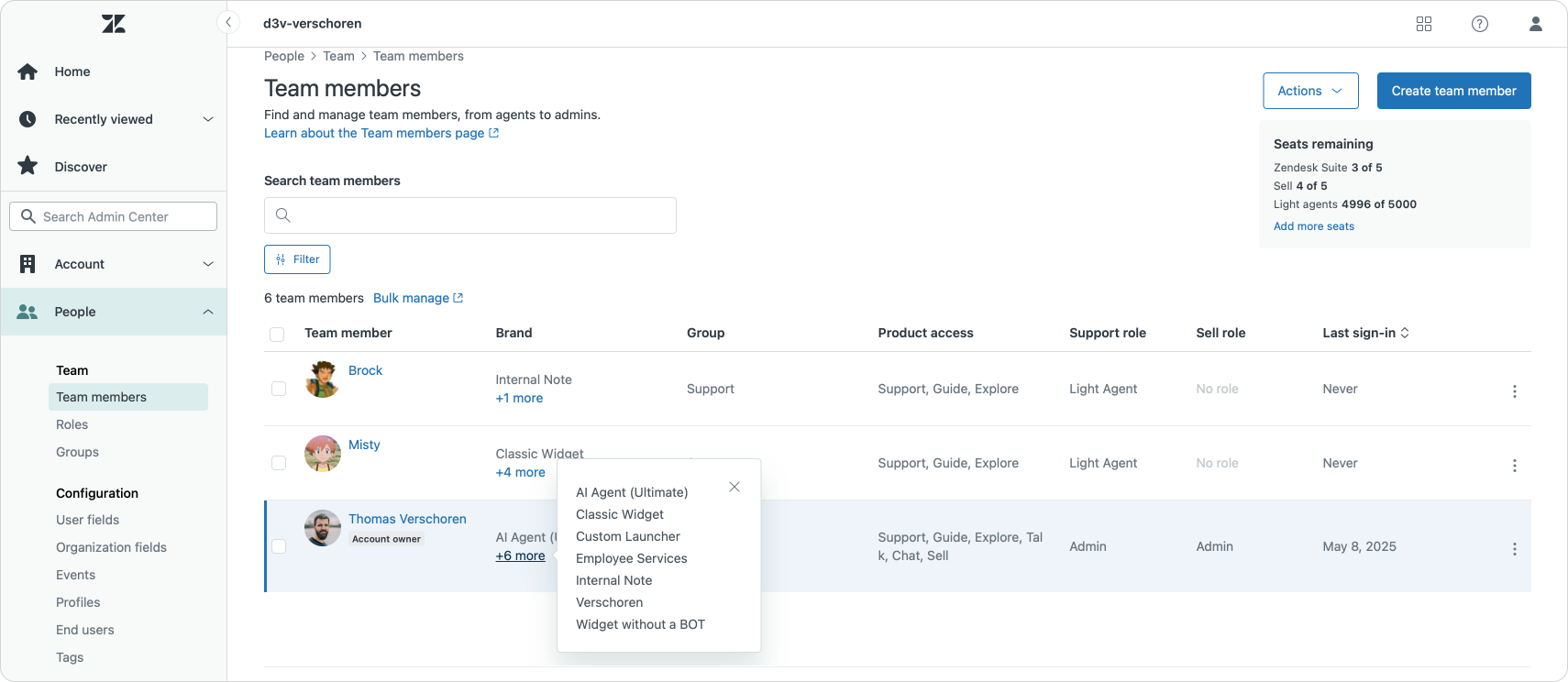
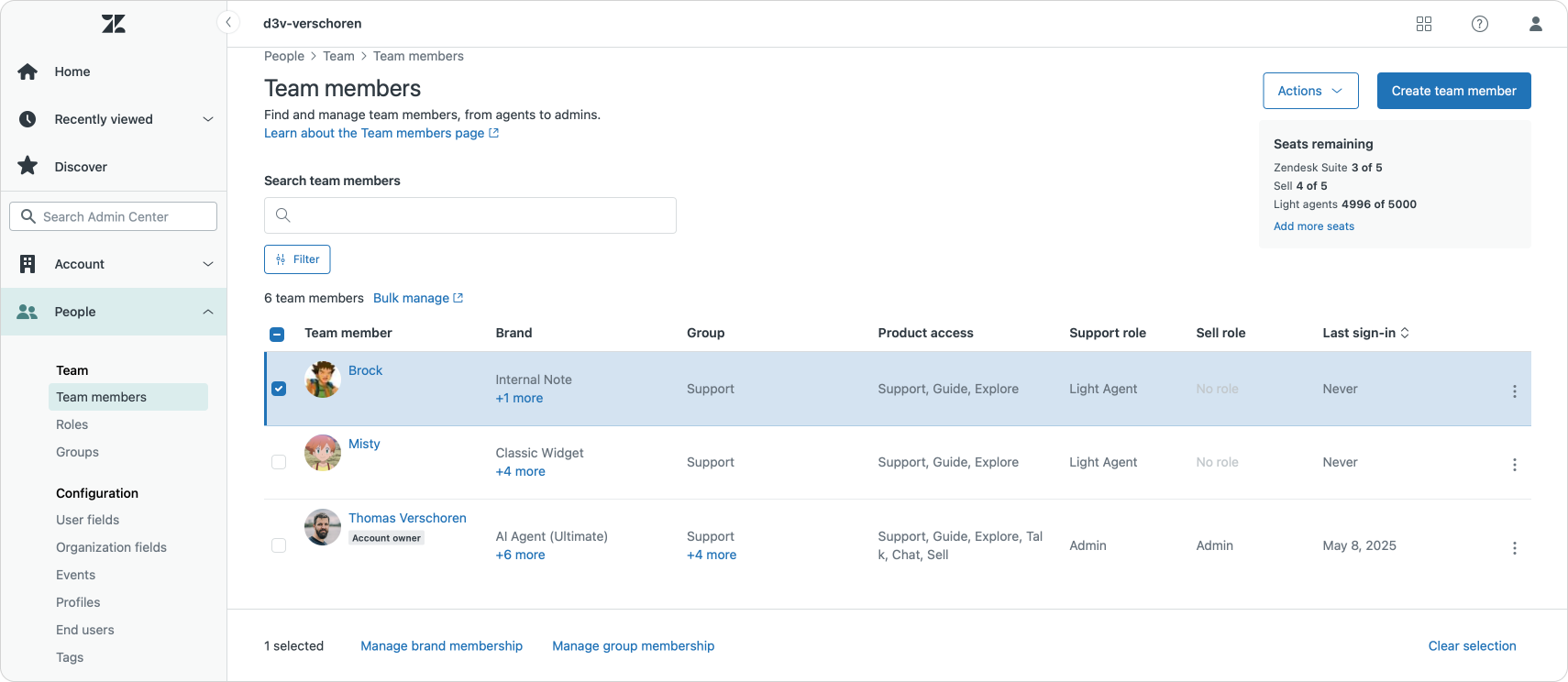
From there, you can add or remove agents from specific brands.

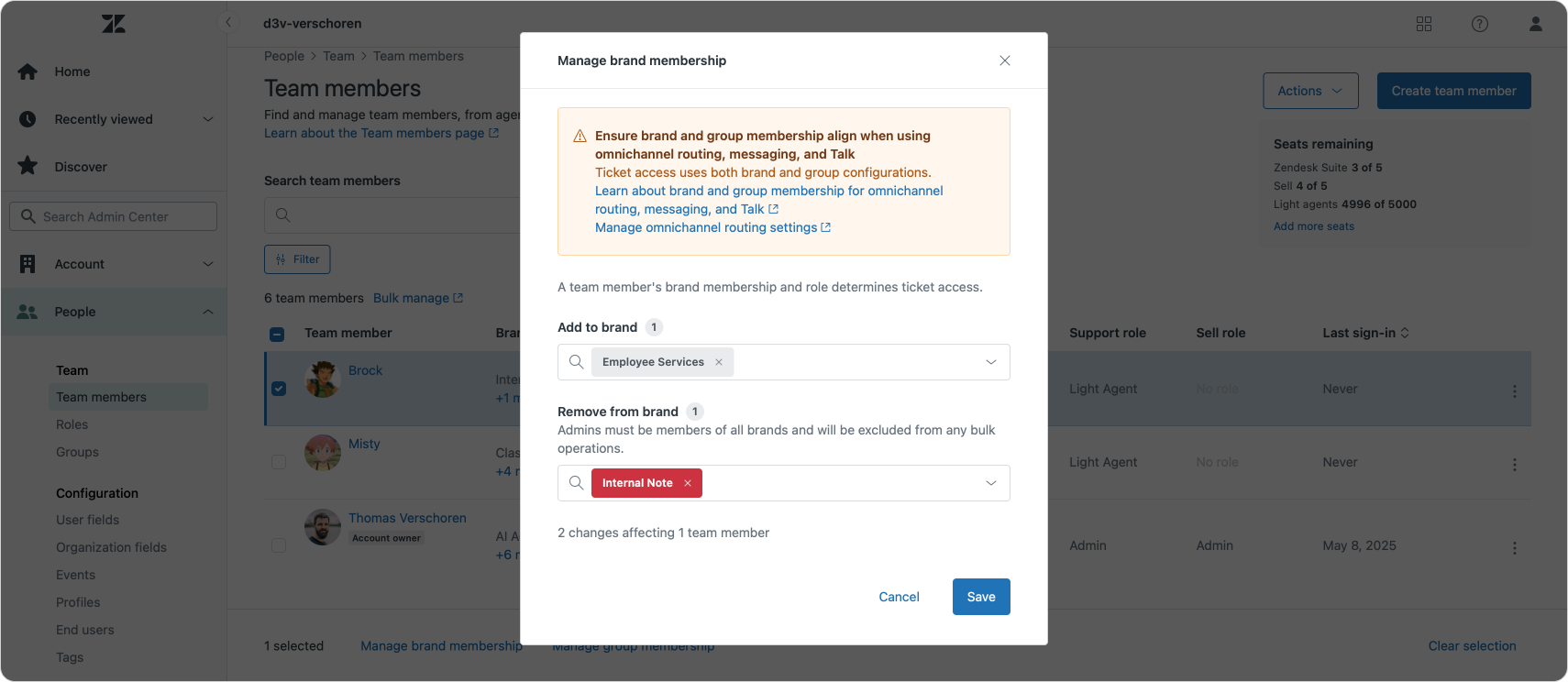
You may have already seen the banner at the top of your instance:

Previously, adding a new agent meant they were automatically placed in a default group—creating a small security risk if that group wasn’t relevant to their role.
With Department Spaces, new agents start with access to zero brands—ensuring they can’t accidentally view tickets until assigned.
During the rollout, Zendesk temporarily allows agents without brand assignments to access all tickets. This ensures no one is blocked from work mid-migration.
It is recommended though to start assigning agents to the right brands once you get access to Department Spaces. But starting this summer, the default flips: no brand = no ticket access.
Double-check brand memberships when assigning agents to queues.
If you want to easily migrate over, or have too many agents to manually update in one go, there's a handy No Brand filter to see only agents that have no brand or department assigned yet.
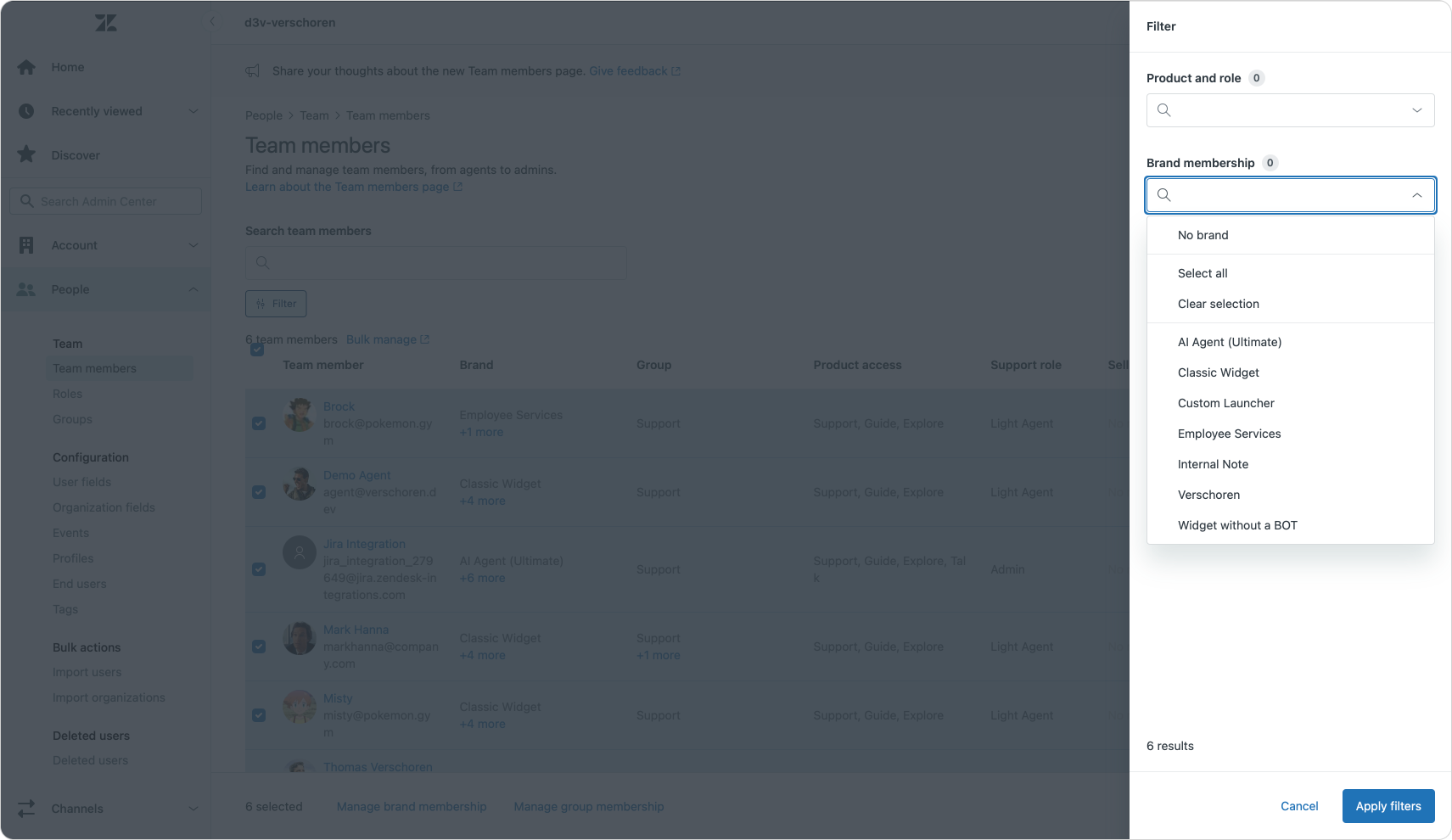
Changes in Brand Management
Department Spaces aren’t the only change coming. Zendesk is also refreshing the brand management UI.
Each brand now has a dedicated details screen, showing assigned team members. Over time, this may expand to include features like SSO settings, social channels, contextual workspaces, or email templates per brand.
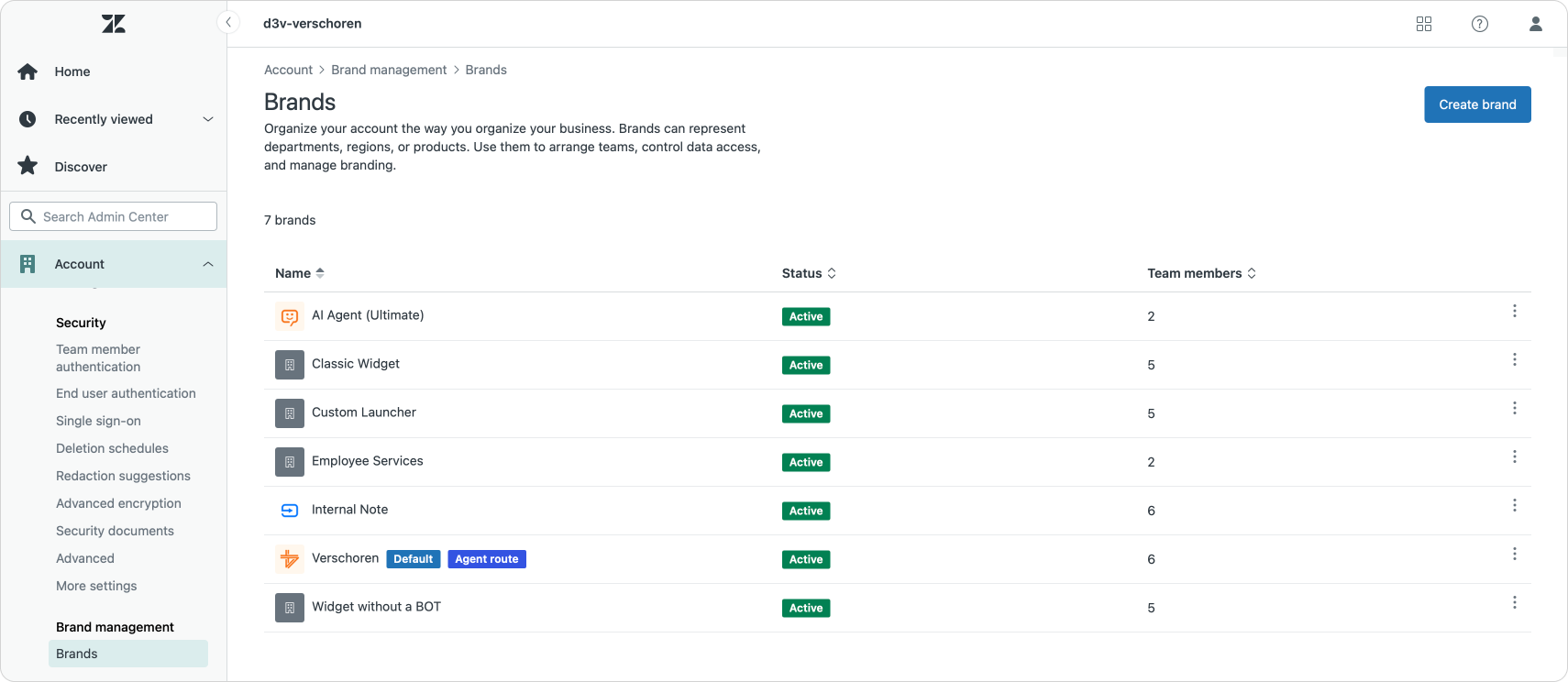
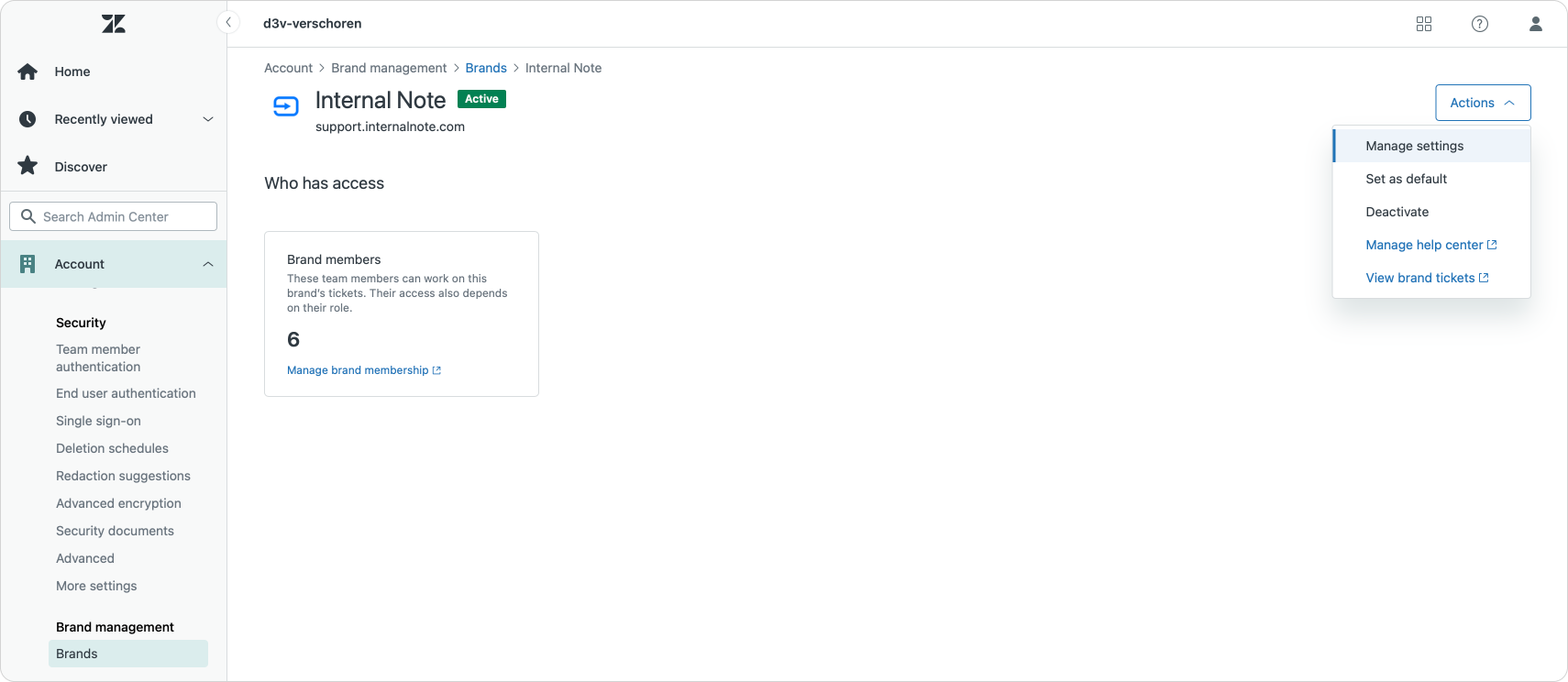
Existing brand features—like domain mapping, email signatures, and subdomains—are now found under a compact Actions menu.

Limitation
There is one significant limitation though with this new setup
Department Spaces require one brand per department, which may mean multiple Help Centers—even if you only want one central portal.
Example: Internal Employee Support
Say you want to create a single Help Center for:
- IT
- HR
- Facilities
To use Department Spaces fully, you’d need to create three brands, potentially resulting in three Help Centers.
Workaround
You can:
- Launch just one Help Center
- Use a trigger to set the ticket’s brand after it’s submitted
However, this is a workaround—not an ideal long-term solution.
I hope Zendesk will support a unified Help Center experience across internal brands in the future.
Final Thoughts
Department Spaces mark a clear shift in Zendesk’s evolution—from a multi-brand support tool to a full-service platform for both customers and employees. This change brings several important improvements:
- Shifts access control from groups to brands
- Reshapes how we approach ticket routing and group structure
- Closes a long-standing permissions gap in Zendesk
With the recent Admin Center update to the Brands section, I hope this trend continues. Here’s a wishlist of potential improvements:
- SSO per brand - Enable brand-specific sign-on solutions for end users
- Email templates per brand - Customize communications on a per-brand basis
- Brand-scoped admin rights - Restrict admin access to queues, macros, and Copilot procedures per department
Routing and segmentation design just got a lot easier—especially for organizations with multiple teams or departments.
If you’re still using groups to segment by brand, now’s the time to simplify and move towards department spaces and omnichannel routing!
Department Spaces mark a significant step forward in how Zendesk handles access, structure, and scalability.
By shifting control from groups to brands—and reframing those brands as departments—Zendesk simplifies complex setups, improves data privacy, and makes it easier to manage multi-team environments.
While some limitations remain, especially around unified Help Center experiences, this change lays a strong foundation. For any admin rethinking their group structure, routing logic, or internal support strategy, Department Spaces are worth adopting early.



